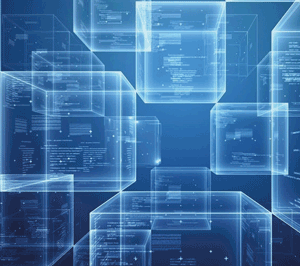Why should records management professionals care about blockchain?

Widely known as the technology underpinning the digital currency bitcoin, blockchain has acquired a new identity in the enterprise. Today, more than 40 top financial institutions and a growing number of companies across industries are experimenting with distributed ledger technology.
You may have heard of bitcoin , a digital currency that is shaking up the financial world by making it possible for parties in a transaction to exchange money without the need for intermediaries like banks or credit card processors.
However, it's less likely you've heard of blockchain , the technology that underlies bitcoin. Blockchain is an important technology for records management professionals to understand because it has broad implications for securing and authenticating intellectual property at lower cost and higher efficiency. Here's what you need to know.
There are many ways to verify the authenticity of paper documents, including watermarks, signatures and embossed seals. But digital assets present a problem. Documents in digital form can be modified and copied with no one being the wiser. That makes them difficult to trust. There are many products and services that provide secure and verified document management, but they can be expensive and often require the involvement of a third party.
Blockchain is a digital mechanism that enables people who don't know each other to engage in trusted transactions with full confidence in the integrity of the assets being exchanged.
It does this by embedding authentication into the document itself and using a closed loop tracking system to protect against tampering or modification. If you've ever used a synchronised file-sharing system like DropBox or Microsoft OneDrive, you know basically how the process works. Those services enable people to share files and retail local copies by synchronising the files between everyone who shares them. If one person changes a document, the new version is automatically copied to everyone else's local folder.
Blockchain works the same way, but it adds a layer of code called a block to the process. A block is just a sequence of unique letters and numbers protected by a highly secure form of encryption called public key. The use of public key encryption is important because it enables the owner of the information to control it without giving up personal information like names or Social Security numbers.
Every party in a blockchain network gets a "golden copy" of the document containing the embedded block. If the document changes, a new block is added and the revised file is synchronised throughout the network, a process that usually takes just seconds. As more changes are made, new blocks are added, forming a chain. That blockchain is both an audit trail and a version tracking system. Each block represents an earlier version of the document, enabling anyone to backtrack to see what was changed.
Blockchain also uses a distributed record-keeping system called a ledger that keeps track of changes to assets within the chain. Unlike a bank or financial accounting system, the ledger isn't centralised, but is distributed to all the computers in the chain. As long as all documents have the same blockchain signature, everything is fine. However, if a version of a document is introduced that doesn't match the blockchain signatures of the others (which are tracked in the ledger), it's rejected. This ensures against fraud or manipulation.
Advantages of blockchain
Blockchain has several unique advantages. One is anonymity. Parties who come to a blockchain can engage in trusted exchanges without revealing their identities, which cuts down on time. Another is blockchain's distributed structure. Any two or more people can create a blockchain without going through the process of registering with a central authority. They can even create private blockchains that have different custom security definitions that limit what participants in the chain can do. In all cases, the parties to the blockchain decide what the rules are.
It's important to note that blockchain doesn't apply just to documents. It can be used with any kind of digital asset, such as images, video files and email backups. Blockchain is becoming particularly popular in intellectual property businesses. For example, professional photographers can use it to manage licensing rights to their creations and even to enable royalty payments.
Why it matters
Here are some reasons records management professionals should become familiar with blockchain:
Cost savings - This is the most obvious benefit. Because blockchain transactions don't require intermediaries, processes can be made more efficient and less expensive. There's no need for auditors or legal professionals to validate the authenticity of information, so those costs come out of the process.
Efficiency - Fewer people means faster turnaround. Transactions that might take days waiting for multiple sign-offs can be concluded in seconds.
Security - The fewer participants there are in a transaction, less risk there is that something could go wrong. Handoff points are a prime vulnerability, and blockchain effectively eliminates them.
Flexibility – Any digital asset can use blockchain, including difficult-to-protect items like multimedia and email records.
Competitive advantage - Companies in the intellectual property space – such as law firms and stock photo agencies – can consider using blockchain to offer new services that benefit both buyers and content creators.
Blockchain is likely to get a boost from the recent move by a group of more than 70 of the world's largest financial institutions to make their co-developed blockchain platform freely available under an open source license. The banks hope the move will unleash a gusher of innovation around new products and services based upon this technology.
